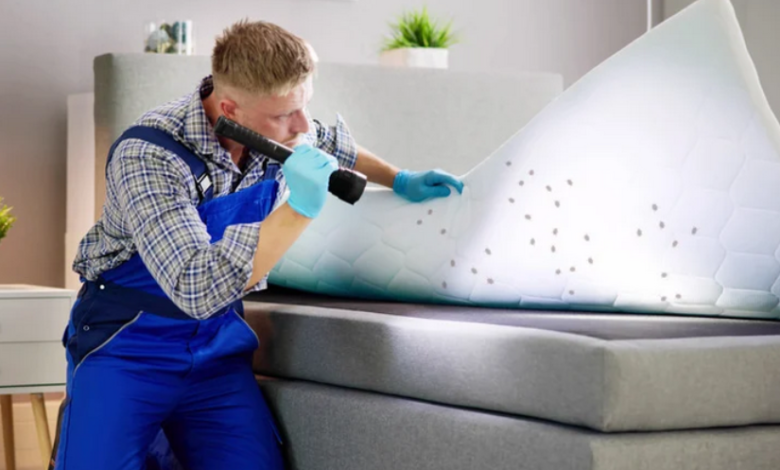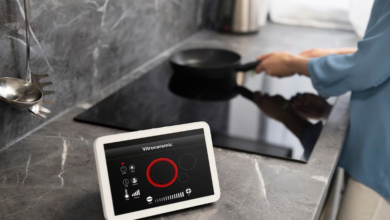Expert-Approved Bedbug Control Strategies

Introduction
Bedbugs are tiny, blood-sucking pests that can turn your peaceful home into a nightmare. These resilient insects hide in mattresses, furniture, and even electrical outlets, making them difficult to eliminate. If left untreated, a small infestation can quickly spread, leading to sleepless nights and itchy bites.
Fortunately, pest control experts have developed effective strategies to combat bedbugs. In this article, we’ll explore expert-approved methods for identifying, preventing, and eradicating bedbugs from your home.
Identifying a Bedbug Infestation
Before tackling a bedbug problem, you need to confirm their presence. Here are key signs to look for:
1. Bite Marks
Bedbug bites often appear as small, red, itchy welts in a line or cluster, usually on exposed skin like arms, legs, and neck.
2. Blood Stains on Sheets
Crushed bedbugs leave tiny blood spots on bedding and mattresses.
3. Dark Fecal Spots
These look like small black or brown dots on mattresses, furniture, and walls.
4. Musty Odor
A strong, unpleasant smell may indicate a large infestation.
5. Live Bedbugs or Shed Skins
Bedbugs control ( bekæmpelse af væggelus ) are reddish-brown, oval-shaped, and about the size of an apple seed. Nymphs are smaller and lighter in color.
See also: Affordable Therapy in Hong Kong: Making Mental Health Care Accessible
Expert-Approved Bedbug Control Strategies
Once you confirm an infestation, take immediate action. Here are the most effective strategies recommended by pest control professionals.
1. Heat Treatment
Bedbugs cannot survive extreme heat. Experts recommend:
- Steam Cleaning: Use a high-temperature steamer (at least 160°F) on mattresses, furniture, and carpets.
- Dryer Treatment: Wash and dry infested clothing, bedding, and curtains on the highest heat setting.
- Professional Heat Chambers: Pest control companies use industrial heaters to raise room temperatures to lethal levels (120°F or higher).
2. Chemical Treatments
While DIY sprays may help, professional-grade insecticides are more effective. Experts use:
- Residual Insecticides: These long-lasting chemicals kill bedbugs over time.
- Desiccants (Diatomaceous Earth or Silica Gel): These powders dehydrate and kill bedbugs by damaging their exoskeletons.
- Insect Growth Regulators (IGRs): These prevent bedbugs from reproducing.
Note: Always follow safety guidelines when using chemicals and consider hiring a professional for severe infestations. For more read https://vaeggelus-fri.dk/
3. Freezing Infested Items
Extreme cold can also kill bedbugs. Place small infested items in a sealed bag and freeze them at 0°F for at least four days.
4. Vacuuming and Deep Cleaning
- Use a vacuum with a HEPA filter to remove bedbugs, eggs, and debris from mattresses, carpets, and furniture.
- Dispose of the vacuum bag in a sealed plastic bag immediately.
- Scrub infested areas with a stiff brush to dislodge eggs.
5. Mattress and Furniture Encasements
Special bedbug-proof covers trap existing bugs inside and prevent new ones from entering. Leave encasements on for at least a year to ensure all bedbugs die.
6. Decluttering and Reducing Hiding Spots
Bedbugs thrive in cluttered spaces. Reduce hiding spots by:
- Removing unnecessary items from bedrooms.
- Sealing cracks in walls and furniture.
- Keeping your home clean and organized.
7. Professional Pest Control Services
For severe infestations, hiring a licensed exterminator is the best option. Professionals use a combination of heat, chemical, and non-chemical treatments to ensure complete eradication.
Preventing Future Infestations
Prevention is key to avoiding another bedbug problem. Follow these expert tips:
1. Inspect Secondhand Furniture
Before bringing used furniture into your home, thoroughly inspect it for signs of bedbugs.
2. Be Cautious When Traveling
- Check hotel beds, headboards, and luggage racks for bedbugs.
- Keep luggage on a rack away from the bed and walls.
- Wash and dry all clothing on high heat after returning home.
3. Regularly Inspect Your Home
Routine checks can help catch an infestation early. Pay attention to seams, crevices, and upholstered furniture.
4. Use Bedbug Monitors
Interceptors placed under bed legs can trap bedbugs and alert you to their presence.
Myths About Bedbug Control
Many misconceptions exist about bedbug removal. Here are some debunked myths:
❌ Myth: Bedbugs only live in dirty homes.
✅ Fact: Bedbugs are attracted to blood, not dirt. Even clean homes can get infested.
❌ Myth: Essential oils alone can eliminate bedbugs.
✅ Fact: While some oils repel bedbugs, they are not a standalone solution.
❌ Myth: You can starve bedbugs by leaving your home.
✅ Fact: Bedbugs can survive months without feeding. Professional treatment is necessary.
Conclusion
Bedbugs are a persistent pest, but with the right strategies, you can eliminate them effectively. Combining heat treatments, chemical solutions, and preventive measures is the best approach. For severe cases, professional pest control services provide the most reliable results.




